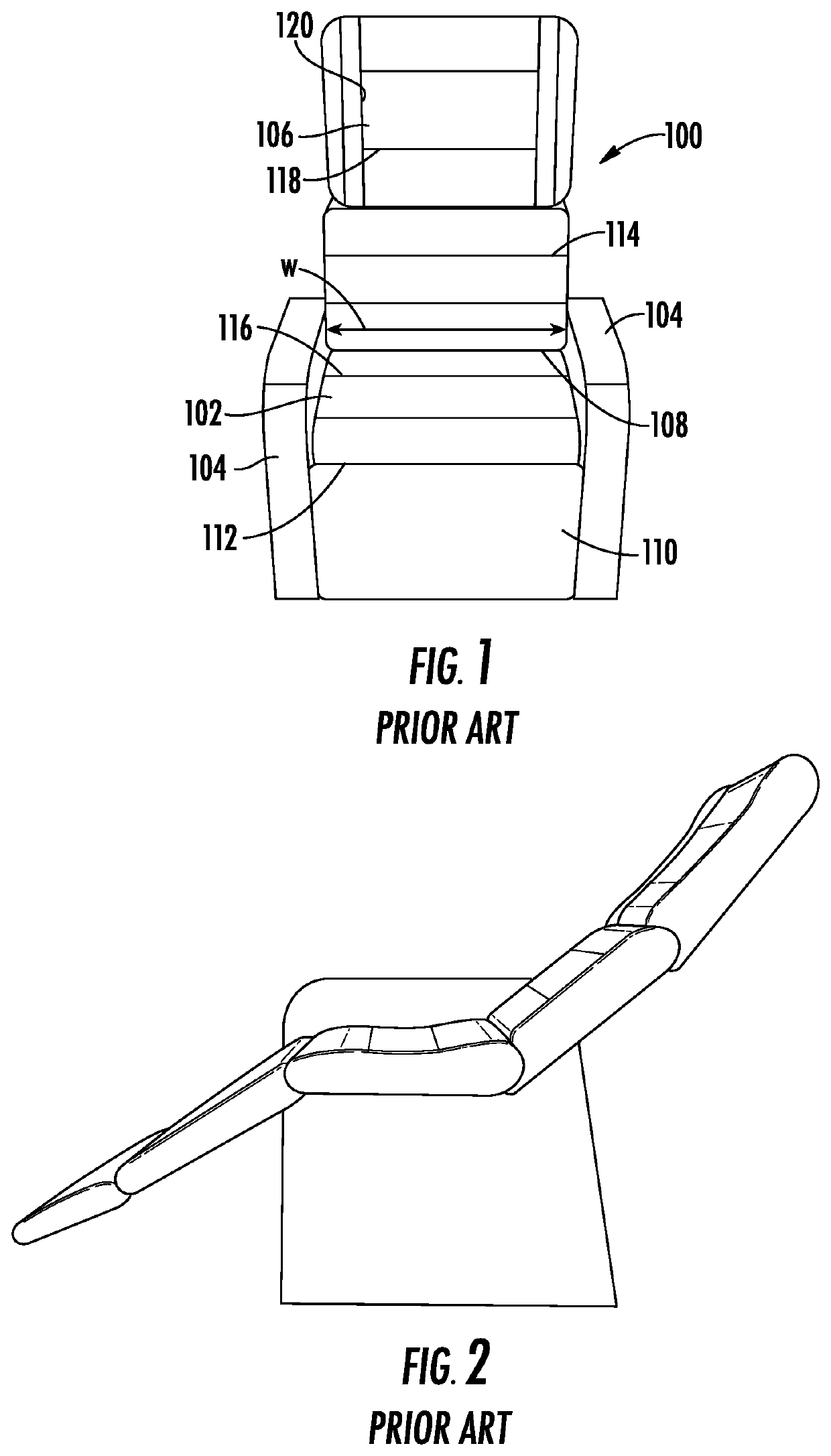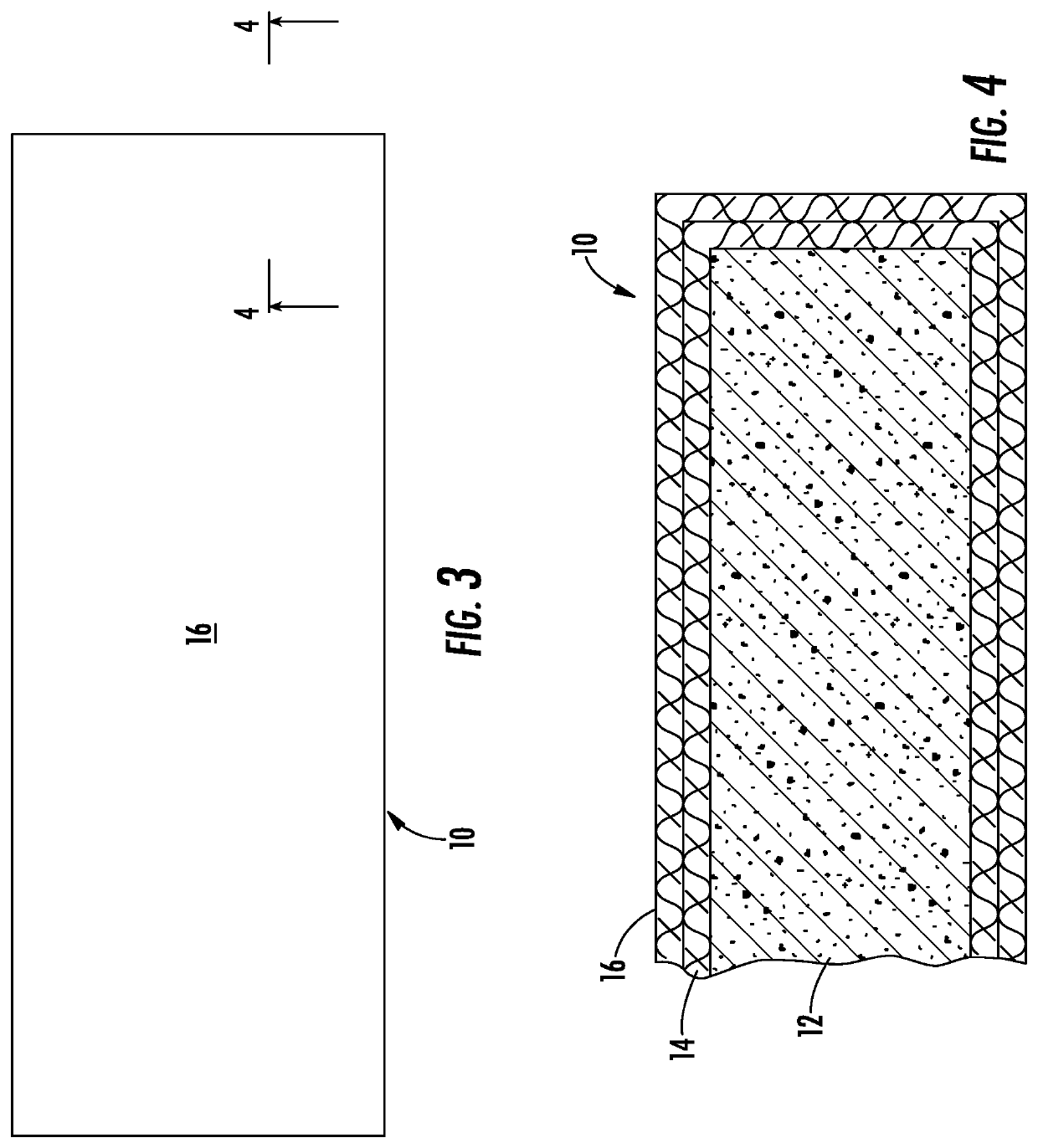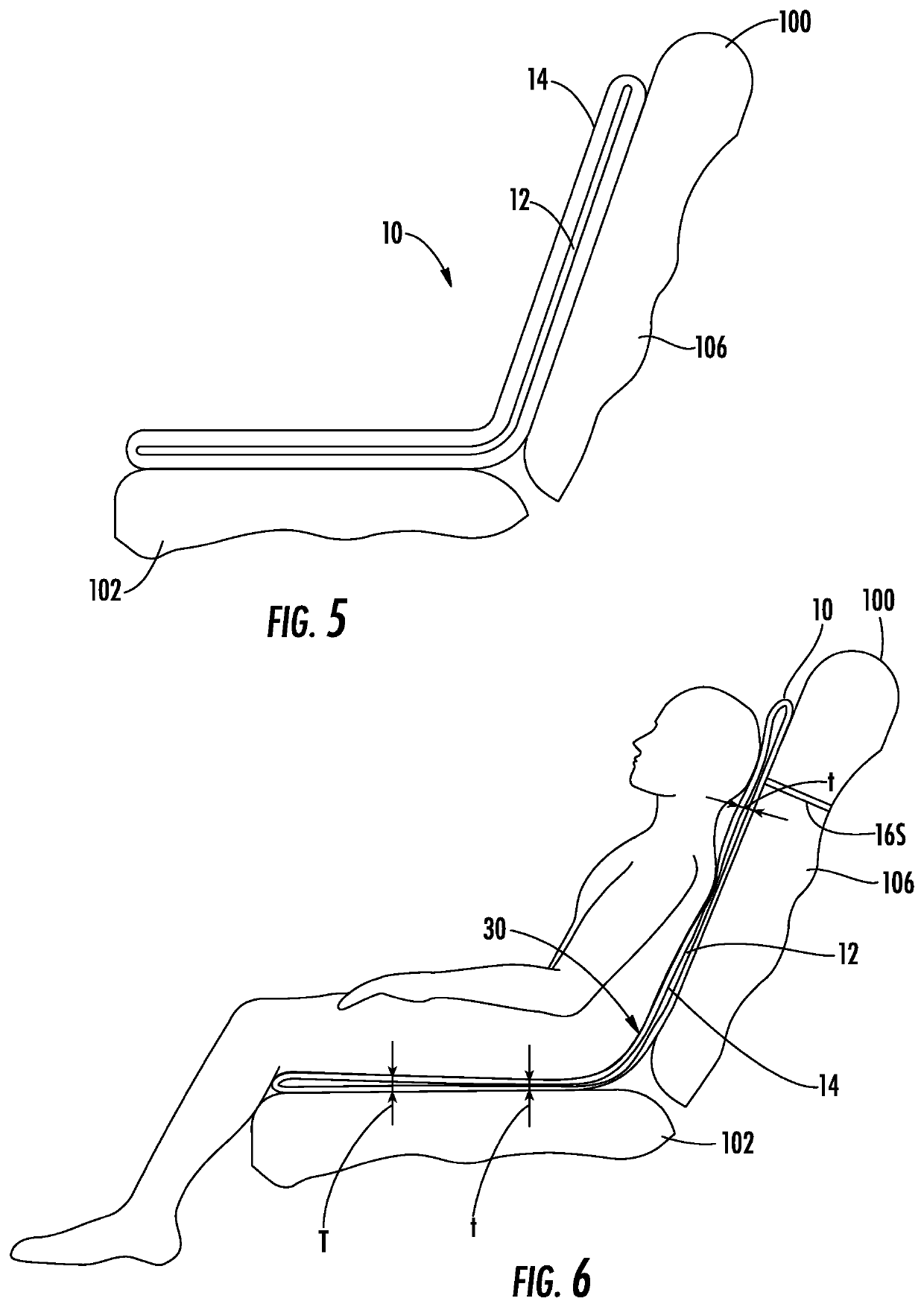Seating pad with woven cover
a technology of woven covers and eating pads, applied in the field of seating pads, can solve the problems of frequent discomfort of travelers, many travelers becoming extremely uncomfortable, and vacation travelers suffering from the same inconveniences, etc., and achieve the effect of enhancing support and comfort for the lumbar region
- Summary
- Abstract
- Description
- Claims
- Application Information
AI Technical Summary
Benefits of technology
Problems solved by technology
Method used
Image
Examples
Embodiment Construction
[0047]A seating pad assembly in accordance with the subject invention is intended primarily for use on a transportation seat, such as the airline seat 100 shown in FIG. 1. The seat 100 includes a hip / thigh support 102 disposed between two armrests 104. A back support 106 is hinged to the hip / thigh support 102 and can move between the substantially erect position shown in FIG. 1 and a partly reclined position (not shown). The back support 106 in some airline seats 100 also can be pivoted to a fully reclined condition where the back support 106 is substantially in the same plane as the hip / thigh support 102. A gap 108 necessarily exists between the hip / thigh support 102 and the back support 106 to accommodate the relative pivoting movement. The seat 100 also may have a foot rest 110 that is hinged relative to the hip / thigh support 102. A gap 112 exists between the hip / thigh support 102 and the foot rest 110. Other cracks, creases and seams 114, 116, 118 and 120 exist at other location...
PUM
 Login to View More
Login to View More Abstract
Description
Claims
Application Information
 Login to View More
Login to View More - R&D
- Intellectual Property
- Life Sciences
- Materials
- Tech Scout
- Unparalleled Data Quality
- Higher Quality Content
- 60% Fewer Hallucinations
Browse by: Latest US Patents, China's latest patents, Technical Efficacy Thesaurus, Application Domain, Technology Topic, Popular Technical Reports.
© 2025 PatSnap. All rights reserved.Legal|Privacy policy|Modern Slavery Act Transparency Statement|Sitemap|About US| Contact US: help@patsnap.com



